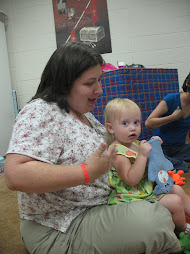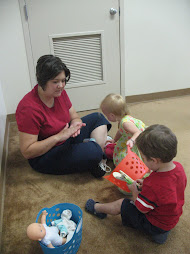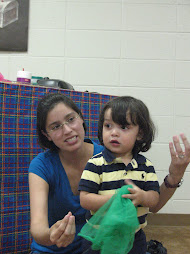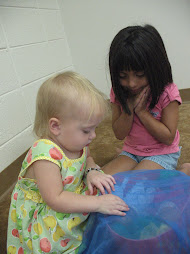NEW SESSION OF "SIGN AND SING" BEGINS ON JUNE 7
Registration is in progress for "Sign and Sing A" which will begin on June 7. New students are accepted for this class. Parents and children will learn to use signs for familiar activities, foods and animals. Contact the studio or website to enroll. (www.klmusicstudio.kindermusik.net)
WHAT HAPPENS IN A SIGN AND SING CLASS?
A Kindermusik Sign and Sing class is a very busy place. Children and parents engage in pretend play using props to set the stage for learning. Children sing songs and engage in imaginative play about events in their daily routines. American Sign Language (ASL) sign are used. Studies indicate that hearning children who learn sign language develop stronger language skills than non signers. Additionally, small motor skills in the hands and fingers develop more rapidly which helps the child learn to hold a pencil or scissors. But the most important advantage that Sign and Sing children receive from their class is quality time with parent / caregiver.
Ms. KATHY and "Signing Bear"

Children enjoy their names sung and signed by Ms. Kathy and "Signing Bear"
Ms. ALICIA signs "Happy"

Ms. Alicia leads the class in group singing and signing.
Tuesday, March 17, 2009
SUMMER 2009 SESSION
The studio is currently on recess, but will re-open after Memorial Day weekend. The next Sign and Sing session will begin at that time. It will be taught by Licensed Kindermusik Educator, Lennie Garcia. Registration can take place by telephone or on line at www.klmusicstudio.kindermusik.com.
Subscribe to:
Post Comments (Atom)
Blog Archive
SIGN AND SING PHILOSOPHY
Signing Smart research indicates that parents benefit most from learning how to integrate signs into everyday life with their young children. So, rather than memorize a list of signs, parents learn signs in each class as they practice the songs and activities that introduce the signs.
Sign and Sing curriculum will help parents learn ASL signs that are useful and interesting for communicating with hearing infants and young children. Not only do parents learn how to form signs, but they also learn how to integrate signs naturally into everyday interactions with their children. Following this curriculum fosters meaningful two-way communication between parents and children.
Sign and Sing curriculum will help parents learn ASL signs that are useful and interesting for communicating with hearing infants and young children. Not only do parents learn how to form signs, but they also learn how to integrate signs naturally into everyday interactions with their children. Following this curriculum fosters meaningful two-way communication between parents and children.





No comments:
Post a Comment